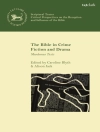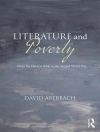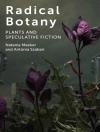Mapping Tokyo in Fiction and Film explores ways that late 20th- and early 21st- century fiction and film from Japan literally and figuratively map Tokyo. The four dozen novels, stories, and films discussed here describe, define, and reflect on Tokyo urban space. They are part of the flow of Japanese-language texts being translated (or, in the case of film, subtitled) into English. Circulation in professionally translated and subtitled English-language versions helps ensure accessibility to the primarily anglophone readers of this study—and helps validate inclusion in lists of world literature and film. Tokyo’s well-established culture of mapping signifies much more than a profound attachment to place or an affinity for maps as artifacts. It is, importantly, a counter-response to feelings of insecurity and disconnection—insofar as the mapping process helps impart a sense of predictability, stability, and placeness in the realand imagined city.
Innehållsförteckning
Chapter 1. Introduction.- Chapter 2. Translation, Subtitling, and Tokyo Placemaking.- Chapter 3. Gender and Mobility: Tracking Fictional Characters on Real Monorails, Trains, Subways, and Trams.- Chapter 4. Coordinates of Home and Community.- Chapter 5. Locating the Outsider Inside Tokyo.- Chapter 6. Tokyo Cartographies of Mystery and Crime.- Chapter 7. Conclusion: Flux and Fluidity and World Literature and Film.
Om författaren
Barbara E. Thornbury is Professor in the Department of Asian and Middle Eastern Languages and Studies at Temple University, USA. She co-edited and contributed to Tokyo: Memory, Imagination, and the City (2018), and is the author of America’s Japan and Japan’s Performing Arts: Cultural Mobility and Exchange in New York, 1952-2011 (2013).












